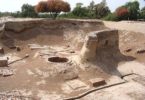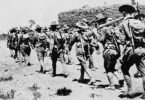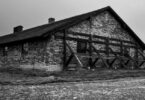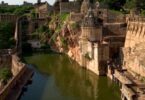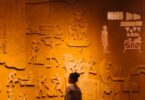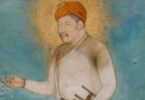Questions about the Ottoman Empire:
Which sultan marked the conquest of Constantinople and the expansion of the Ottoman Empire into Europe?
(a) Mehmed the Conqueror
(b) Selim I
(c) Suleiman the Magnificent
(d) Mehmed II
Which event is considered the beginning of the decline of the Ottoman Empire?
(a) Battle of Gallipoli
(b) Treaty of Küçük Kaynarca
(c) Young Turk Revolution
(d) Treaty of Sèvres
Which city was known as the “Jewel of the Ottoman Empire” and served as the capital during its peak?
(a) Istanbul
(b) Cairo
(c) Athens
(d) Damascus
Who lives in a seraglio?
(a) Royal children
(b) Cows and pigs
(c) Wives and concubines
(d) Wizards and/or witches
Who was the founder of the Ottoman Empire?
(a) Suleiman the Magnificent
(b) Mehmed the Conqueror
(c) Selim I
(d) Osman I
Which region was the initial base of the Ottoman Empire?
(a) Anatolia
(b) Mesopotamia
(c) Arabian Peninsula
(d) North Africa
Who was the leader responsible for the early expansion and establishment of the Ottoman Empire?
(a) Mehmed the Conqueror
(b) Suleiman the Magnificent
(c) Selim I
(d) Osman I
Which empire did the Ottoman Empire succeed as the dominant power in the Eastern Mediterranean and Anatolia?
(a) Roman Empire
(b) The Persian Empire
(c) Byzantine Empire
(d) Mongol Empire
Which military tactic did the Ottoman Empire famously use during sieges?
(a) Guerrilla warfare
(b) Blitzkrieg
(c) Longbow archery
(d) Janissary infantry
Which important trade route passed through the Ottoman Empire, connecting Europe to Asia?
(a) Silk Road
(b) Trans-Saharan Trade Route
(c) Spice Route
(d) Amber Road
Which significant victory solidified the Ottoman Empire’s dominance in Anatolia?
(a) Battle of Manzikert
(b) Battle of Kosovo
(c) Battle of Mohács
(d) Battle of Nicopolis
Which famous structure in Istanbul served as a symbolic centerpiece and administrative hub of the Ottoman Empire?
(a) Topkapi Palace
(b) Blue Mosque
(c) Hagia Sophia
(d) Grand Bazaar
What was the official religion of the Ottoman Empire?
(a) Christianity
(b) Judaism
(c) Zoroastrianism
(d) Islam
Which sultan moved the capital of the Ottoman Empire from Adrianople to Istanbul?
(a) Mehmed the Conqueror
(b) Selim I
(c) Suleiman the Magnificent
(d) Mehmed II
Which city was captured by Mehmed the Conqueror, resulting in the Ottoman Empire’s expansion into Europe?
(a) Alexandria
(b) Constantinople
(c) Damascus
(d) Tehran
Related: Education Trivia Questions and Answers
Which sultan is often regarded as the greatest ruler of the Ottoman Empire and presided over its height of power and prosperity?
(a) Mehmed the Conqueror
(b) Selim I
(c) Suleiman the Magnificent
(d) Mehmed II
When did the Ottoman Empire come to an end?
(a) 1914
(b) 1923
(c) 1945
(d) 2001
Who was the Ottoman Empire’s longest-reigning sultan?
(a) Mehmed the Conqueror
(b) Suleiman the Magnificent
(c) Selim I
(d) Mehmed II
Which war played a significant role in the eventual collapse of the Ottoman Empire?
(a) World War I
(b) American Civil War
(c) Napoleonic Wars
(d) Spanish-American War
Which major territory of the Ottoman Empire declared independence in 1908?
(a) Egypt
(b) Greece
(c) Serbia
(d) Bulgaria
Which of the following modern-day countries was NOT part of the Ottoman Empire?
(a) Turkey
(b) Greece
(c) Egypt
(d) Italy
What architectural style is exemplified by the famous structure Hagia Sophia in Istanbul?
(a) Gothic
(b) Baroque
(c) Renaissance
(d) Byzantine
Which treaty marked the official end of the Ottoman Empire?
(a) Treaty of Sèvres
(b) Treaty of Versailles
(c) Treaty of Tordesillas
(d) Treaty of Paris
Related: Christianity Trivia Questions and Answers
Which sea bordered the Ottoman Empire to the south?
(a) Mediterranean Sea
(b) Arabian Sea
(c) Red Sea
(d) Caspian Sea
Which event triggered the Young Turk Revolution and hastened the decline of the Ottoman Empire?
(a) Armenian Genocide
(b) Balkan Wars
(c) Russo-Turkish War
(d) Greek War of Independence
Which region of Europe was partially under Ottoman control during the height of the empire?
(a) Scandinavia
(b) Balkans
(c) Iberian Peninsula
(d) British Isles
Which European power acquired de facto control over the administration of Ottoman finances in 1909?
(a) France
(b) United Kingdom
(c) Russia
(d) Germany
Which famous architectural masterpiece was built during the reign of the Ottoman Empire?
(a) Taj Mahal
(b) Great Wall of China
(c) Hagia Sophia
(d) Colosseum
Which type of decorative art was highly developed during the Ottoman Empire, featuring intricate designs on tiles and ceramics?
(a) Mosaic
(b) Fresco
(c) Kufic script
(d) Iznik pottery
Which branch of Islam was followed by the Ottoman Empire?
(a) Sunni
(b) Shia
(c) Sufi
(d) Ibadi
What was the major conflict the Ottoman Empire was involved in during the early 18th century?
(a) Great Northern War
(b) Seven Years’ War
(c) War of the Spanish Succession
(d) War of the Austrian Succession
What was the elite infantry unit of the Ottoman Empire called?
(a) Samurai
(b) Praetorian Guard
(c) Janissaries
(d) Spartan Hoplites
Which event resulted in the loss of significant Ottoman territories in Europe?
(a) Treaty of Karlowitz
(b) Treaty of Versailles
(c) Treaty of Tordesillas
(d) Treaty of Nanking
In the year 1566, the Ottoman Empire experienced a significant military defeat in a battle against which European power?
(a) Austria
(b) France
(c) England
(d) Spain
Which sultan of the Ottoman Empire is renowned for his legal reforms and contributions to the arts and sciences?
(a) Mehmed the Conqueror
(b) Suleiman the Magnificent
(c) Selim I
(d) Osman I
In which century was the Ottoman Empire founded?
(a) 12th century
(b) 14th century
(c) 16th century
(d) 18th century
Which artistic form is prominently associated with the Ottoman Empire?
(a) Calligraphy
(b) Sculpture
(c) Impressionist painting
(d) Photography

